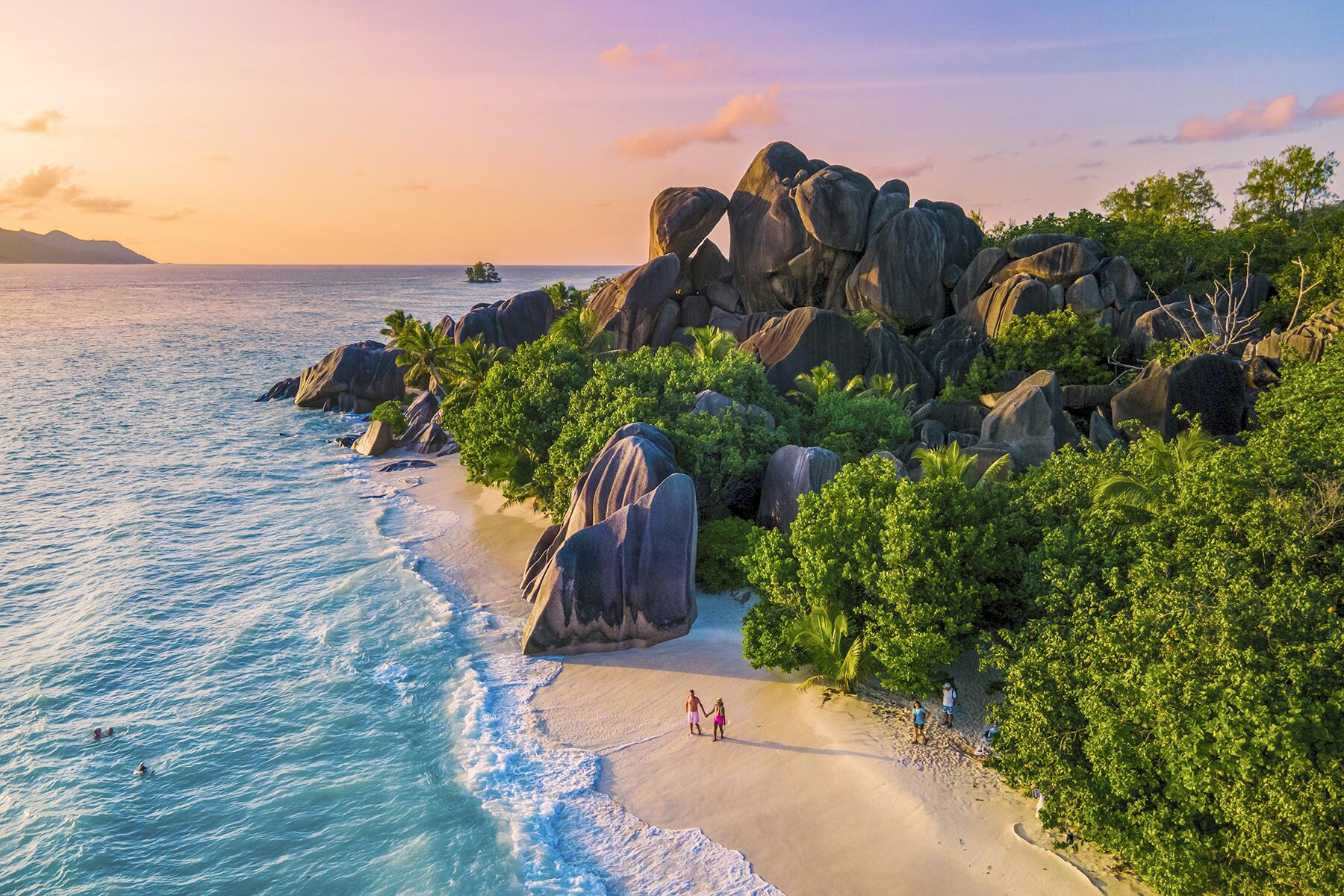A visit to one of Scotland's historic islands will transport you back in time.
Dotted across the North Atlantic waters, all 790 of Scotland’s Northern and Western Isles have a rich history spanning over 8,000 years. When visiting these islands, you’ll be traveling across time in Scotland—it’s possible to stop at a Neolithic site, a medieval castle, and a hub for 19th century Arctic exploration in the span of 24 hours.
Although the heart of Scotland might rest in the Highlands (thanks, Highlander and Braveheart!), the soul of this maritime nation is found in its rugged isles and coast. Some of these historic isles are relatively easy to visit by ferry, but others are extremely remote. Visitors will be required to take an occasional ferry, charter a boat or, if the goal is to see as many of the islands as possible, book a trip with an adventure outfitter such as Adventure Canada, whose expedition ship Ocean Endeavor cuts a path to the Scottish isles that are difficult to reach.
Top Picks for You
Iona
Just 1.5 miles wide and 3 miles long, Iona is a small island in the Hebrides with a big heart—or rather, many hearts that belonged to kings.
Founded by St. Columbia in 563 AD, Iona Abbey sits on a hillside overlooking the ocean. As tour guides tell the tales of warring Gaels, Picts, and Vikings, it’s easy to picture thousands of swords being pulled from their scabbards at once. The abbey’s cemetery, Reilig Odhráin, contains the earthly remains of roughly 60 kings from different periods of Scotland’s history. Even Macbeth—a decent ruler albeit playwright William Shakespeare defamed his name in the tragedy Macbeth—is buried in this old, seaside graveyard.
End your day with a cup of tea and a scone at the Heritage Garden Café, or enjoy a hearty meal (and rest your weary head) at the Martyr’s Bay Restaurant, St. Columbia Hotel or the Argyll Hotel.
Staffa
Just a little over 5.5 miles northeast of Iona sits the Isle of Staffa. The island has striking features—long, hexagonal pillars of basalt and a giant, romantic sea cavern called Fingal’s Cave—which had prompted visits by Queen Victoria, Sir Walter Scott, Jules Verne, William Wordsworth, and Felix Mendelssohn, who composed Hebrides Overture as an ode to the island.
Although Queen Victoria and Prince Albert rowed with their royal barge into the cave, the best course for visitors today is to first strike out with a ship and then hop in a zodiac to circumference the entire island. Like many of Scotland’s islands, this too, has been uninhabited by humans since the 18th century. A national nature reserve, the island inhabits many species of seabirds, and its waters are home to whales, sharks, seals, and porpoises.
Recommended Fodor’s Video
St. Kilda
Located farther away in the Outer Hebrides, the St. Kildan archipelago was inhabited for at least a couple millennia—from the Bronze Age until 1930—at which point its residents were evacuated due to illness and crop failures. A row of houses still remains on the island of Hirta, as well as over a thousand cleitean, which are stone huts that preserved and stored food.
It’s hard to believe that these remote islands were ever inhabited since it was subject to strong storms, the National Trust for Scotland has recorded wave peaks at 52 feet high. The violent weather made fishing difficult, so islanders harvested seabirds such as gannet and fulmar, which nested in rocky sea stacks just off the islands.
Previously it once took days to reach the archipelago, today’s modern ships can transport to the islands in just a few hours. Although there are a handful of decent day trip outfitters (Go to St. Kilda, for example, and Kilda Cruises), larger adventure outfitters such as Adventure Canada have their own team of on-ship scientists and historians who add more color while visiting the archipelago. There are no overnight accommodations on these wild, windswept islands.
Skye
Sea lochs, quaint harbor towns, rushing rivers, even a site known as “Fairy Pools”—the Isle of Skye is breathtakingly beautiful. Often crowded with jostling tourists, veer away from the beaten path (the Neist Point Lighthouse, for example), and instead hike the famous mountains known as the Black Cuillin and stop to see some of the brochs, which are round, Pictish towers built about 2,000 years ago.
Although a day trip from Glasgow or Edinburgh is not feasible—both cities are way too far away by vehicle—but do either visit with an expedition cruise (Scotland Slowly is a great trip to take) or stay the night at the Cuillin Hills Hotel, or, for those on a budget, at Skye Backpackers.
Islay
If the names “Lagavulin,” “Laphroaig,” “Bowmore,” and “Ardnahoe” are familiar, then Islay, one of Scotland’s whisky distilling regions, is the place to visit to learn the history of uisge (the Scottish Gaelic word for water). There are short flights from both Glasgow and Edinburgh, and it’s also possible to visit this Hebridean isle by ferry from neighboring islands.
Staying overnight on this island is also a breeze, as there are plenty of lovely inns and bed and breakfasts. The Harbour Inn and Bowmore Cottages are run by Bowmore Distillery, and both the Lochindaal and Port Charlotte hotels are also nice.
Arran
Often described as “Scotland in miniature”, the Highland Boundary Fault runs through the Isle of Arran, which separates the land into highland and lowland areas. On Arran, geology reigns supreme: Although similar to the Hebrides, the island actually sits in the Firth of Clyde, which are deep waters just beyond the mouth of the River Clyde. Giant hills, peaks, and cliffs along the coast feature prominently, while glens, sills, and dikes rest in the lowlands.
Arran has plenty of prehistoric sites to visit, including the six stone circles on Machrie Moor. Make sure to strike up Goat Fell, which is the island’s highest peak for hiking, and meander through the small, picturesque village of Brodick.
Lewis and Harris
Get two for the price of one by visiting Lewis and Harris—two parts of the same island. On the west coast, on Lewis, sit the 5,000-year-old Calanais Standing Stones, one of Scotland’s best-preserved Neolithic monuments. These stones appear often in popular culture—they were even used as the model for a fictional circle of stones in the TV series, Outlander.
Lewis also boasts the Gearrannan Blackhouse Village, a traditional crofting township with cottages that were lived in until the 1970s. Meanwhile, on Harris, one would be remiss to skip a visit to Harris Tweed and Knitwear Company, which makes tweed attire using an old Hattersley loom.
Papa Stour
Visitors to Papa Stour can expect to see remarkable geologic features such as blowholes, cliffs, stacks, and caves along the ocean edge, including the Holl o Boardie, a cave nearly half a mile long.
The island in the Shetlands also has many Neolithic burial chamber sites and the remains of a house dating to Norse occupation in the 13th century. You’ll find that a visit to the main settlement in the village of Biggings to be one of the most interesting sight-seeing you do here. Under 20 people live on Papa Stour—a major decline from the hundreds of inhabitants in the 1800s—and it’s fascinating to get a glimpse of what life might be like for crofters. There are no pubs, shops, cafés, or restaurants on the island.
Foula
The Shetland Isle of Foula, which means “bird island” in Old Norse, has one of Britain’s largest colonies of bonxies, or Great Arctic Skuas. Visitors are told after arriving to Foula is to “Watch out for the Bonxies” because there are so many of these birds. These large, fiercely territorial birds will attack anything (humans included) who dare venture near their breeding ground.
Yet the island, the most remote inhabited island in Britain with under 40 inhabitants, appeals to more people than just ornithologists. One of the most beautiful islands on the planet, with sky-high cliffs reminiscent of those found on St. Kilda, Foula also has Shetland ponies which are quite possibly one of the cutest, most expressive, and cheekiest animals on the planet. Oh, and if having no sound pollution and zero traffic appeals to you, stay the night—simple accommodations can be found at Leraback Bed & Breakfast. Or, if you prefer to just stay the day, you can take a stomach-turning ride via a puddle jumper via Tingwall Airport (located in Lerwick, Shetland’s largest town).
Orkney
Although each of the Scottish isles has its own charm, only Orkney has strong links to Arctic exploration. The Hudson’s Bay Company had a recruiting center in the town, Stromness, and Orkney-born surgeon John Rae heeded the call. After accepting a post in Ontario, he started exploring Canada and went on to find the final portion of the Northwest Passage, called the Rae Strait. Today, visitors to Mainland, Orkney can learn more about Rae by visiting the place of his birth, the Hall of Clestrain, owned by the John Rae Society. Make sure to also visit the Stromness Museum, which focuses on maritime culture, and Rae’s final resting place at the St. Magnus Cathedral, in Kirkwall.
Visitors interested in ancient history will also want to head to a few Neolithic sites, including Skara Brae (a settlement made of stone at the edge of the west coast), the Ring of Brodgar (a circle of standing stones), Maeshowe (a chambered cairn and grave), and the Standing Stones of Stenness.





